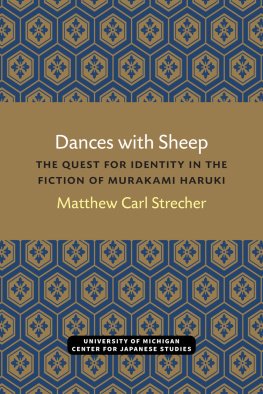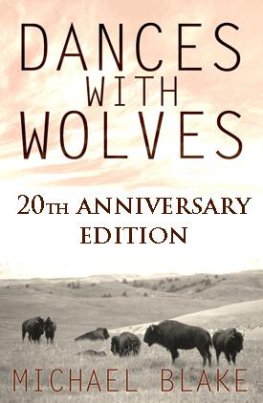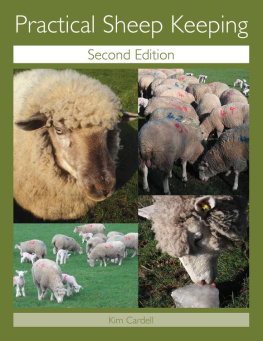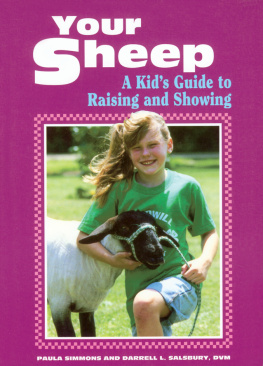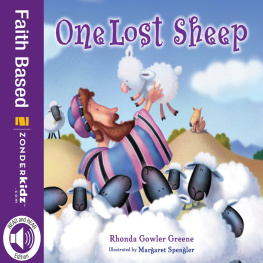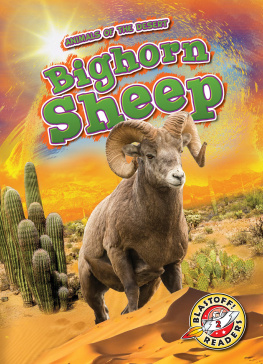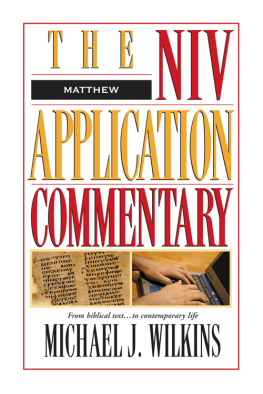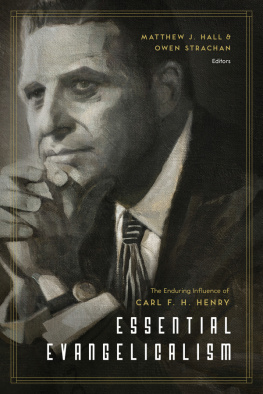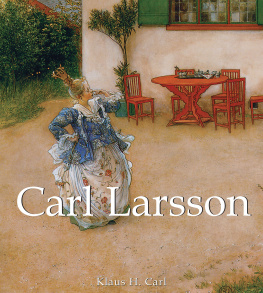Matthew Carl Strecher - Dances with Sheep
Here you can read online Matthew Carl Strecher - Dances with Sheep full text of the book (entire story) in english for free. Download pdf and epub, get meaning, cover and reviews about this ebook. year: 2020, publisher: University of Michigan Center for Japanese Studies, genre: Romance novel. Description of the work, (preface) as well as reviews are available. Best literature library LitArk.com created for fans of good reading and offers a wide selection of genres:
Romance novel
Science fiction
Adventure
Detective
Science
History
Home and family
Prose
Art
Politics
Computer
Non-fiction
Religion
Business
Children
Humor
Choose a favorite category and find really read worthwhile books. Enjoy immersion in the world of imagination, feel the emotions of the characters or learn something new for yourself, make an fascinating discovery.
- Book:Dances with Sheep
- Author:
- Publisher:University of Michigan Center for Japanese Studies
- Genre:
- Year:2020
- Rating:5 / 5
- Favourites:Add to favourites
- Your mark:
- 100
- 1
- 2
- 3
- 4
- 5
Dances with Sheep: summary, description and annotation
We offer to read an annotation, description, summary or preface (depends on what the author of the book "Dances with Sheep" wrote himself). If you haven't found the necessary information about the book — write in the comments, we will try to find it.
Dances with Sheep — read online for free the complete book (whole text) full work
Below is the text of the book, divided by pages. System saving the place of the last page read, allows you to conveniently read the book "Dances with Sheep" online for free, without having to search again every time where you left off. Put a bookmark, and you can go to the page where you finished reading at any time.
Font size:
Interval:
Bookmark:

Dances with Sheep
Michigan Monograph Series in Japanese Studies
Number 37
Center for Japanese Studies
The University of Michigan
Dances with Sheep
The Quest for Identity in the Fiction of Murakami Haruki
Matthew Carl Strecher
Center for Japanese Studies
The University of Michigan
Ann Arbor, 2002
Open access edition funded by the National Endowment for the Humanities/Andrew W. Mellon Foundation Humanities Open Book Program.
2002 The Regents of the University of Michigan
Published by the Center for Japanese Studies, The University of Michigan,
202 S. Thayer St., Ann Arbor, MI 48104-1608
Library of Congress Cataloging in Publication Data
Strecher, Matthew.
Dances with sheep : the quest for identity in the fiction of Murakami Haruki / Matthew Carl Strecher.
p. cm. - (Michigan monograph series in Japanese studies ; no. 37) Includes bibliographical references and index.
ISBN 1-929280-07-6 (cloth : alk. paper)
1. Murakami, Haruki, 1949-Criticism and interpretation. I. Title. II. Series.
PU856.U673 Z86 2002
895.635dc21
2001059866
This book was set in Bauer Bodoni.
This publication meets the ANSI/NISO Standards for Permanence of Paper
for Publications and Documents in Libraries and Archives
(Z39.48-1992).
Published in the United States of America
ISBN 978-1-92-928007-0 (hardcover)
ISBN 978-0-47-203833-6 (paper)
ISBN 978-0-47-212806-8 (ebook)
ISBN 978-0-47-290202-6 (open access)
The text of this book is licensed under a Creative Commons Attribution-NonCommercial-NoDerivatives 4.0 International License: https://creativecommons.org/licenses/by-nc-nd/4.0/
To Mei, Victor, and Lizzie, who have endured with me
Contents
I wanted to turn my eyes to the past, and to reconstruct that past in a form that I could comprehend more easily.
Murakami Haruki, Monogatari no tame no Bken
Murakami Haruki (b. 1949) first appeared on the Japanese literary scene more than two decades ago with his novella Kaze no uta o kike (Hear the Wind Sing, 1979). That work earned the coveted Gunz New Writers Award and launched Murakamis career as a writer virtually overnight. Up until that time (and for some time afterward) the author had been proprietor of a popular jazz cafe called Peter Cat.
Since that debut, regard for Murakami has increased dramatically, not only at home but throughout the world, as a writer of so-called postmodern fiction, while a tremendous body of secondary literature has been produced to explain (and in some cases, explain away) his success. And while some critical essays on Murakami have been published outside of Japan for non-Japanese audiences, the vast majority, naturally enough, has been written by Japanese critics for Japanese audiences. Indeed, until now there has been no book-length work of criticism on Murakami in the English language that takes into account the growing body of his work available in translation.
The present text is intended to help fill this gap. My goal in writing it has been to produce a study sophisticated enough to do justice to the complexities of Murakamis fictional worldit is complexand be useful to scholars of modern Japanese literature, on the one hand, and yet to keep the level of discussion such that the book will be accessible to general readers, particularly those whose access to Murakami is through translated texts.
This, I strongly believe, is the correct approach to this authors work in particular, because he himself has managed, as not many before him
have managed, to tread the tightrope that is still widely believed to divide serious literature and popular fiction. Murakamis work is, in fact, both. As Yoshio Iwamoto wrote some years ago, despite the popularity of Murakamis texts, [t]here is enough of the pure and serious about the work ... to have held critics back from dismissing it merely as popular stuff enough, it might be said, of the adversarial role against established norms of all sorts that the distinguished writer Kenzaburo Oe sees as the defining feature of pure literature (Iwamoto 1993).
But there is no sweeping aside the popularity of Murakamis writing; each successive novel and short story collection makes the bestseller lists in Japan, and often enough outside it, too (Murakami enjoys rock-star status in Taiwan and South Korea). The readership is diverse and enthusiastic, and ranges from high school students to college professors. Murakami himself has rarely expressed pretensions about being part of the serious literary crowdthough he unquestionably claims a significant role in contemporary Japanese writingpreferring instead to focus on the story as both the medium and the purpose of contemporary writing. This has been especially true in the case of his third novel, Hitsuji o meguru bken (A Wild Sheep Chase, 1982), in which he claims to have put stylistic issues away for a while and concentrated instead simply on his task as a storyteller (Kawamoto 1985, 62). Such statements should be read, I think, primarily as a rejection of writing as art, either as an effort to beautify the human condition, or to perfect humanity by aestheticizing it.
This does not mean, however, that Murakamis fiction is irrelevant to contemporary society. Quite the contrary, he would argue that it is art that is now irrelevant; in todays world, awash in the artificial images of television, advertising, and the mass media, of computers and cyberspace, the story is our reality, and thus is the most direct means to reach the public. It was for this reason, as Alfred Birnbaum pointed out some years ago, that Murakami and other young writersamong them, Shimada Masahiko, Yamada Eimi, Murakami Ry and Yoshimoto Bananabegan to distance themselves from terms like pure literature (junbungaku) in favor of fiction (fuikkushori) (Birnbaum 1991, 1).
Others, looking at the broader picture of Japanese literary history, have pointed out that it is pure literature itself that has changed with the times, and that writers like Murakami Haruki have been part of this evolution from the beginning. Kawamura Minato argued quite recently, for instance, that both Murakami Haruki and Murakami Ry, having debuted in Gunz, were marked for pure literature from the start, but that they faced formidable resistance from the entrenched old guard of the Japanese literary establishment.
Both Murakami Haruki and Murakami Ry; began their careers with Gunz, and thus came out as so-called pure writers at the outset. There was, of course, resistance to them. The more conventional writers and critics of pure literatureespecially the older onescertainly set themselves against them, but by then they had already won a place for themselves. (Kawamura and Osugi 2000, 133)
Of course, the same could be said of many young writers seeking to win acceptance by the literary establishment. The difference in Murakamis case is that he has never really actively sought the acceptance of the literary establishment at all, insisting instead that he simply writes what he wants, however he wants (Kawamoto 1985, 39-40). His decision to turn to writing, rather, was a result of his own internal need to understand the major events of his generations past. I wanted to turn my eyes to the past, he says of writing Hear the Wind Sing, to reconstruct that past in a form that I could comprehend more easily (Kawamoto 1985, 38).
Unquestionably, some of this impulse toward understanding remains in Murakamis writing to this day. Much of his interest in the world of multinational capitalism, in terrorism and violence, and most recently in the effects of PTSD (Post Traumatic Stress Disorder), especially related to the 1995 Kobe earthquake, and the AUM Shinriky cults 1995 sarin gas attack in the Tokyo subways, is an attempt to make sense of these things to himself. At the same time, both Murakami and his protagonists have matured enough over the past twenty years or so to develop some interest in helping others to understand better themselves and their world, too. Accordingly, in addition to his own fiction, the authors repertoire of writing today includes translations of major works of American fiction, numerous travelogues, two nonfiction works (discussed below) connected with the AUM incident, illustrated comic-type books, and even a guidebook to recent Japanese fiction for young readers. Clearly, he has diversified considerably since 1979.
Font size:
Interval:
Bookmark:
Similar books «Dances with Sheep»
Look at similar books to Dances with Sheep. We have selected literature similar in name and meaning in the hope of providing readers with more options to find new, interesting, not yet read works.
Discussion, reviews of the book Dances with Sheep and just readers' own opinions. Leave your comments, write what you think about the work, its meaning or the main characters. Specify what exactly you liked and what you didn't like, and why you think so.

